The SteelSeries Rival 100 is a great gaming mouse that you can actually afford
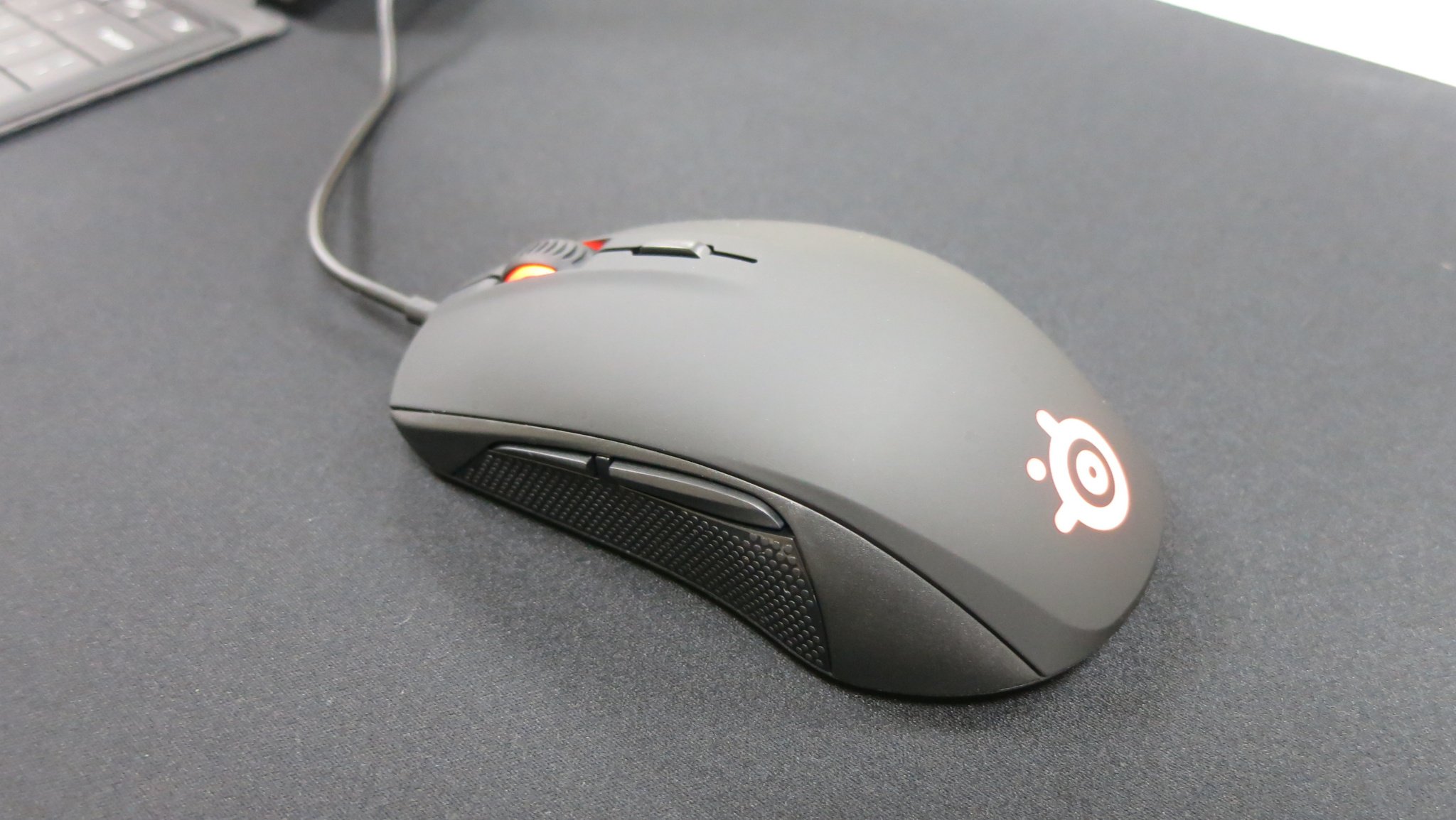
The SteelSeries Rival 100 is Danish manufacturer SteelSeries' most affordable gaming mouse. Clocking in at $40, the Rival 100 has some fairly impressive features: an ambidextrous form factor, RGB lighting, on-the-fly sensitivity switching, and textured grips. If you're looking for a quality mouse for gaming and/or work, this one might fit the bill. Read our full review with video for more details!
Built for either hand
SteelSeries touts the Rival 100 as having a "universal design," which I like to think of as an ambidextrous form factor. The basic shape of the mouse does not favor left- or right-handed users, which is a plus for lefties or the ambidextrous people who secretly plot to overthrow us all someday.
That said, the Rival 100 has one strike against left-handed use. The Back and Forward buttons are found only on the left side of the mouse, with no buttons on the right side. So while a lefty can use this mouse without hand fatigue, he or she won't have easy left-hand access to two important buttons.
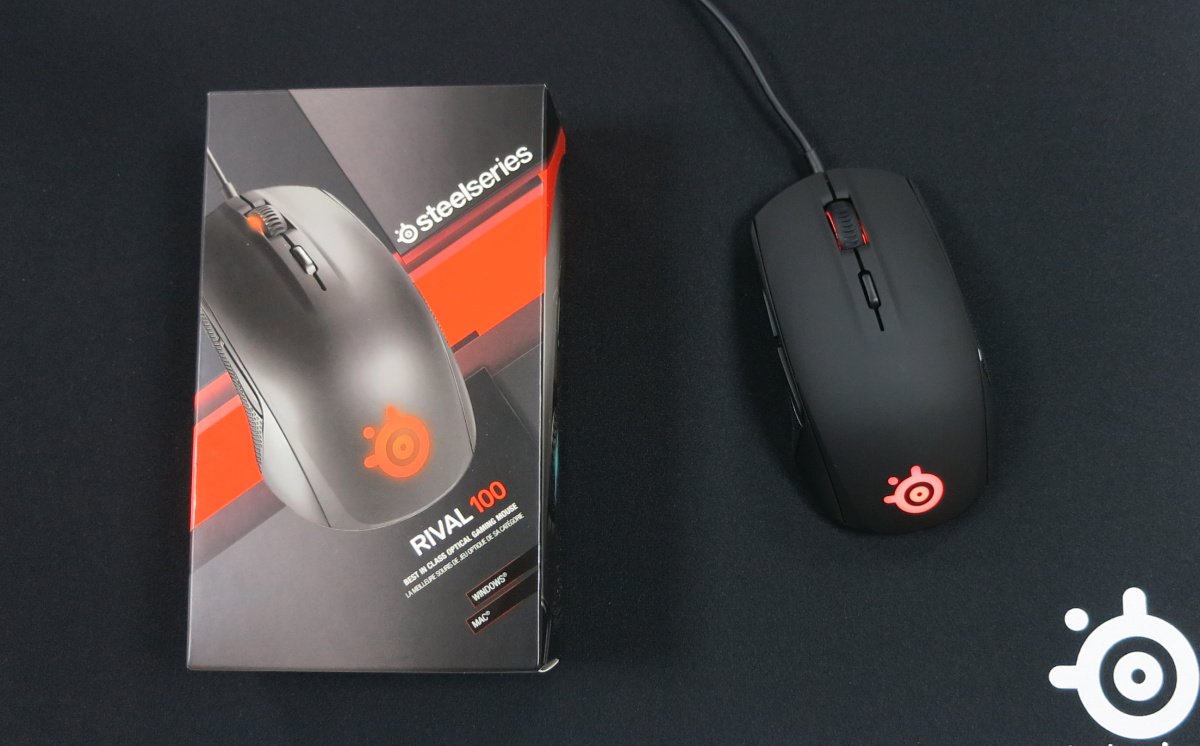
The Forward and Back buttons on the left side of the mouse have a 2mm or so space between them, which seems to make finding the correct button a little easier. Below that, you'll find a textured plastic grip. The right side of the mouse has the same type of grip, although it goes up to where the two side buttons would be.
The grips certainly feel better to hold than bare plastic. They'll keep the mouse from sliding out of your hand during heated gaming or Windows Central reading sessions. That said, they're not nearly as comfortable as the rubber grips on the Razer Mamba TE or Diamondback mice. But those mice cost a lot more than the Rival 100. And I find the Rival 100 more comfortable to hold overall than the Diamondback.
The Rival 100's USB cable is a plain black rubber cable, but it does feature a nice SteelSeries logo on the male end.
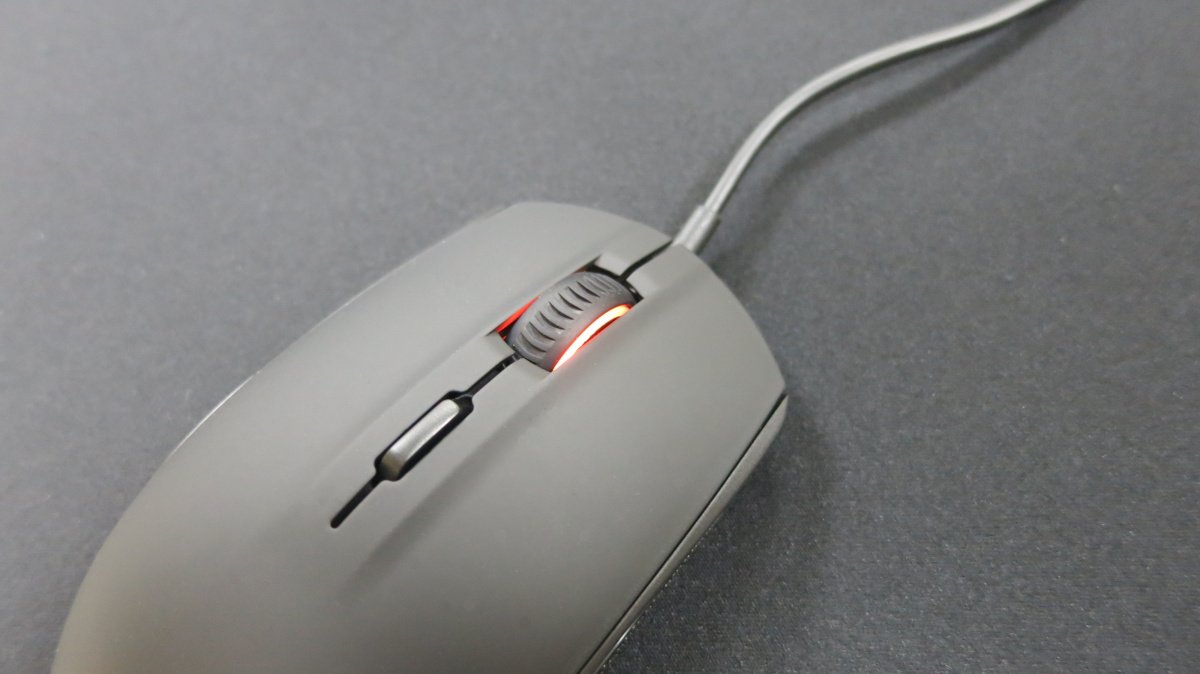
Topside
Whereas the sides of the Rival 100 are made of plastic, the entire top portion of the unit is coated in a thin layer or rubber. It feels good to the touch but shows hand grease more than matte plastic would.
Get the Windows Central Newsletter
All the latest news, reviews, and guides for Windows and Xbox diehards.
The top of the mouse naturally features left and right mouse buttons. Between them lie the mouse wheel, which can be clicked-in as a button. The wheel is covered in tire tread-like ridges. The ridges might not perfectly match the minimum increments of the wheel's movement, but they come close enough.
Below the wheel sits a single button for toggling sensitivity settings.
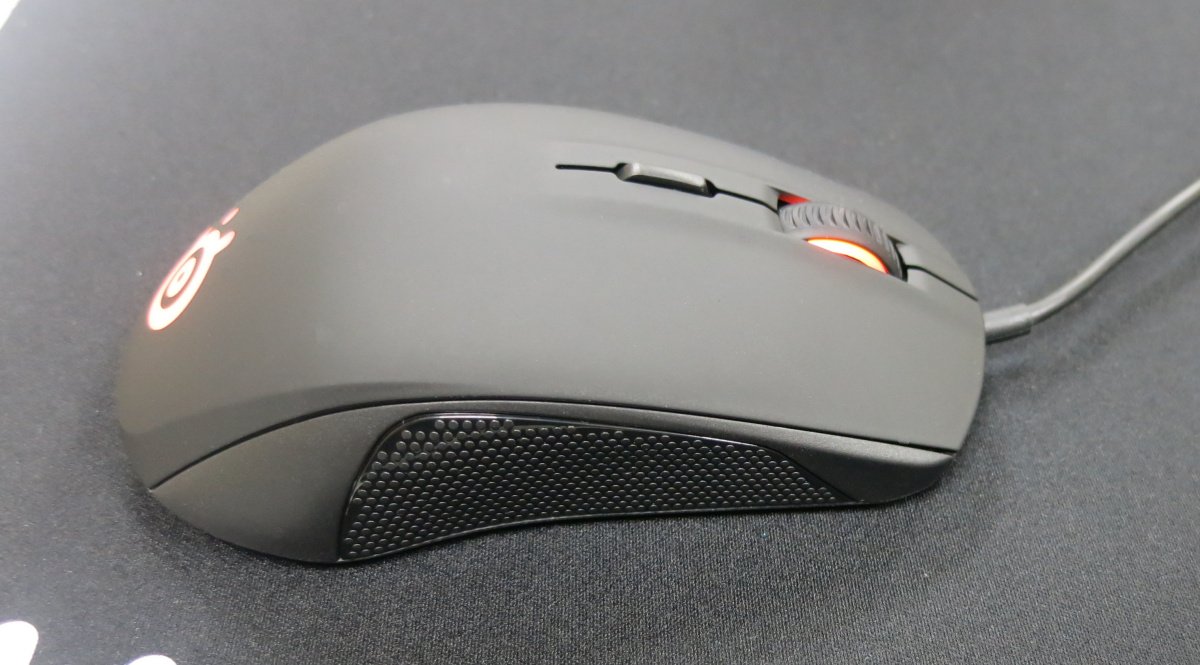
Performance and Settings
The Rival 100 is a 4,000 DPI mouse. SteelSeries refers to that measurement as "4,000 CPI," which stands for Characters Per Inch. I don't know about all this CPI business; I'm a DPI man.
Anyway, 4,000 DPI might not seem like a lot compared to Razer's 16,000 DPI mice. But most users will never want their mice to move any faster than the Rival 100's max setting. 4K is way too fast for me.
The Rival 100's sensitivity button toggles between two user-selectable sensitivity settings. You'll adjust these settings in the SteelSeries Engine 3 software. The sensitivity stages can only be changed in increments of 250 DPI, but that should still allow most of us to find a comfortable setting.
Steel Engine 3 also allows users to reassign the actions of each mouse button and wheel direction, record macros and adjust lighting.
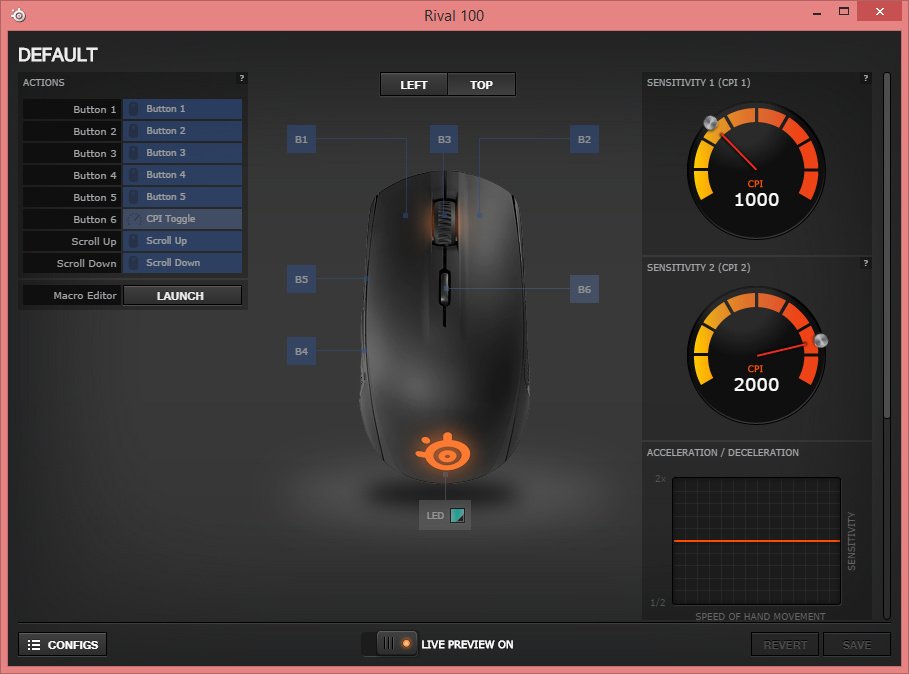
Lighting
The Rival 100 has two lighting areas: the mouse wheel and the SteelSeries logo on the palmwrest. Both areas share the same lighting setting, so you can't configure them independently, unfortunately.
In addition to turning off the lights entirely, the Rival 100 offers three lighting settings to choose from:
- Steady : Pick any color from the RGB spectrum to display as a solid color.
- Breathe : The single color of your choice will pulse steadily at one of three selectable speeds.
- Colorshift : The lights will cycle between a variety of colors. Steel Engine offers four selectable palettes for Colorshift mode.
The Rival 100's lighting options might not be as expansive as those offered by Razer and Corsair, but they still offer a nice bit of flash (and choice) for a mouse at this price point.
Settings chosen in the Steel Engine software are saved directly to the mouse, so they will carry over when using the mouse on different machines.
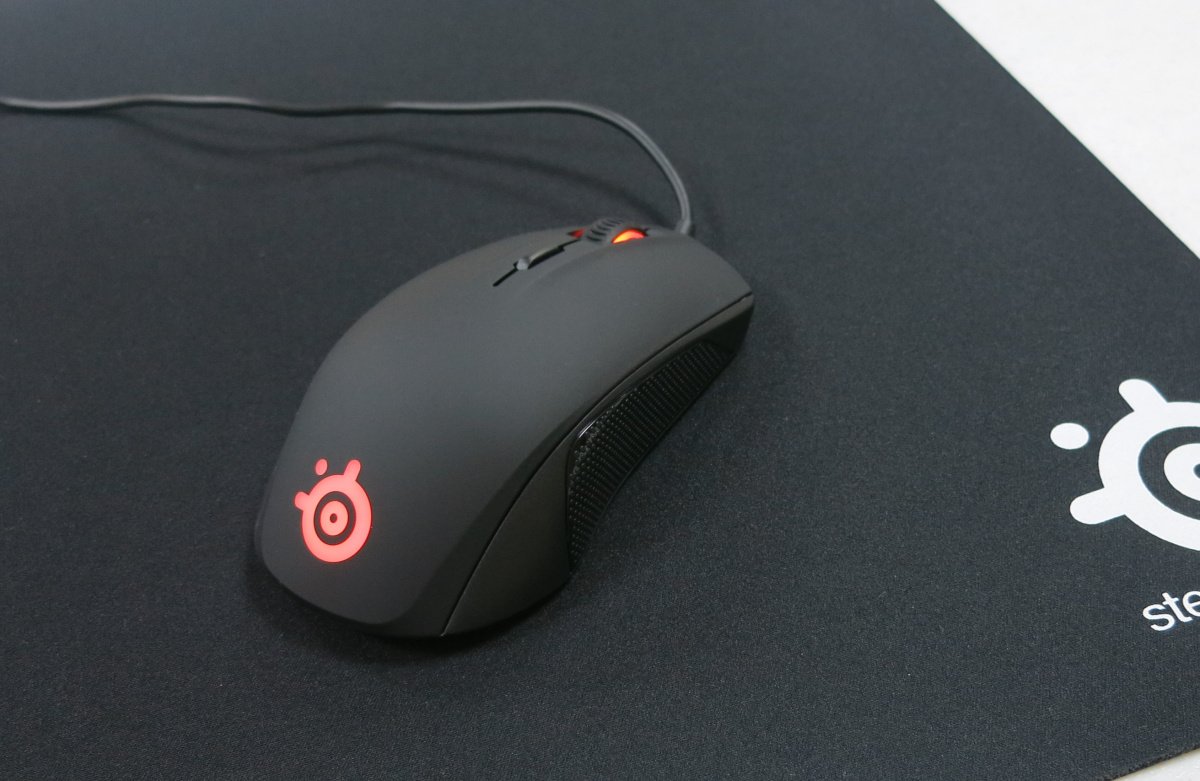
Overall Impression
The Rival 100 is the low-cost alternative to the $60 Rival 300 mouse. The Rival 300 features a more impressive sensor, right-handed design, better buttons, and nicer grips – a fair lineup of improvements for twenty more bucks.
Still, the Rival 100 brings a lot of value with its low price. You get a decent array of buttons (including sensitivity toggle, comfortable grips, and basic but attractive lighting. It's not the fanciest mouse out there, but budget-minded gamers will enjoy it. Plus it comes in a variety of attractive colors, not just black.
Featured mouse surface: SteelSeries QcK XXL
Paul Acevedo is the Games Editor at Windows Central. A lifelong gamer, he has written about videogames for over 15 years and reviewed over 350 games for our site. Follow him on Twitter @PaulRAcevedo. Don’t hate. Appreciate!

